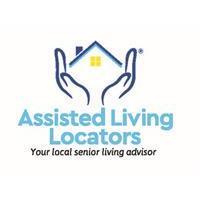October is Long-Term Care Planning Month. Questions around how to afford the rising cost of assisted living and other levels of senior living come into special focus. As Americans grapple with inflation and increased costs, Assisted Living Locators of Northeast Orlando, a local senior placement and referral service, is giving tips on how to pay less for assisted living.
Long-term care includes services designed to meet the personal care needs of seniors, yet many are unprepared for the associated costs. Research shows nearly 40% of people underestimate future expenses for assisted living, with many mistakenly believing Medicare will cover these costs. In reality, most health insurance and Medicare do not cover long-term care, making proactive planning essential.
"The financial aspect of long-term care is often overwhelming for families," said Beau Herman of Assisted Living Locators of Northeast Orlando. "I provide personalized support, helping families explore options, understand costs, and develop a plan that fits their needs and budget. With the right guidance, families can make informed decisions that lead to better outcomes for their loved ones."
The median monthly cost for a one-bedroom unit in assisted living is $5,200, with prices varying by region. Many families are understandably concerned about how to pay for care, but there are creative financial solutions available. Options like personal savings, investments, bridge loans, veterans' benefits, long-term care insurance, and even cashing out life insurance policies can help cover costs.
Assisted Living Locators offers these tips to choose the right community and stretch your dollar.
- Get The Right Amount Of Space. Assisted living communities offer residents a choice of room size. Remember your senior will be socializing in common areas and eating in large dining rooms. Reduce costs by opting for the smallest, most liveable space for their personal room.
- Consider A Roommate. In many senior living communities, a shared space is more cost-effective than a single room or apartment. Sharing a room can be safer and prevent loneliness, a common problem among the elderly.
- Go Small On Community Size. Smaller assisted living residences tend to be less expensive than the larger communities and offer the same quality of care.
- Look Nearby. Sometimes the cost of assisted living communities is driven by the cost of real estate. Look in neighborhoods where the cost of living is less expensive. Traveling an extra 30 minutes to a rural or suburban area can result in a meaningful reduction in rent and care costs.
- Time Your Entrance. Assisted living communities, especially larger ones, have financial pressures the same as other businesses. They are often willing to give price breaks at the end of month or their financial quarter.
- Get Only What You Need. Many assisted living communities will offer an all-inclusive services package. Instead, review the a la cart offerings and only select those services your senior really needs.
- Have More Than One Option. Potential residents should always have more than one option for assisted living to increase bargaining power and likelihood of getting incentives, as well as minimizing items such as community fee. It also provides a client with a Plan B should the assessment of the senior not go well.
If you have questions about a move to assisted living, speak to an Assisted Living Locators Senior Care Advisor Beau Herman at 321-948-7979 or visit ALLORL.com
Assisted Living Locators of Northeast Orlando
-
Beau Herman Owner/Certified Senior Advisor®
- October 11, 2024
- (407) 498-2536
- Send Email



